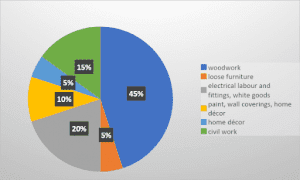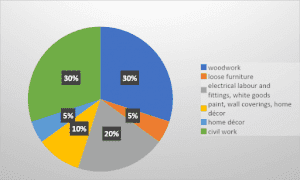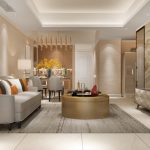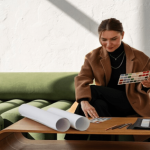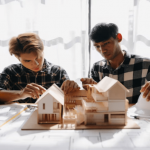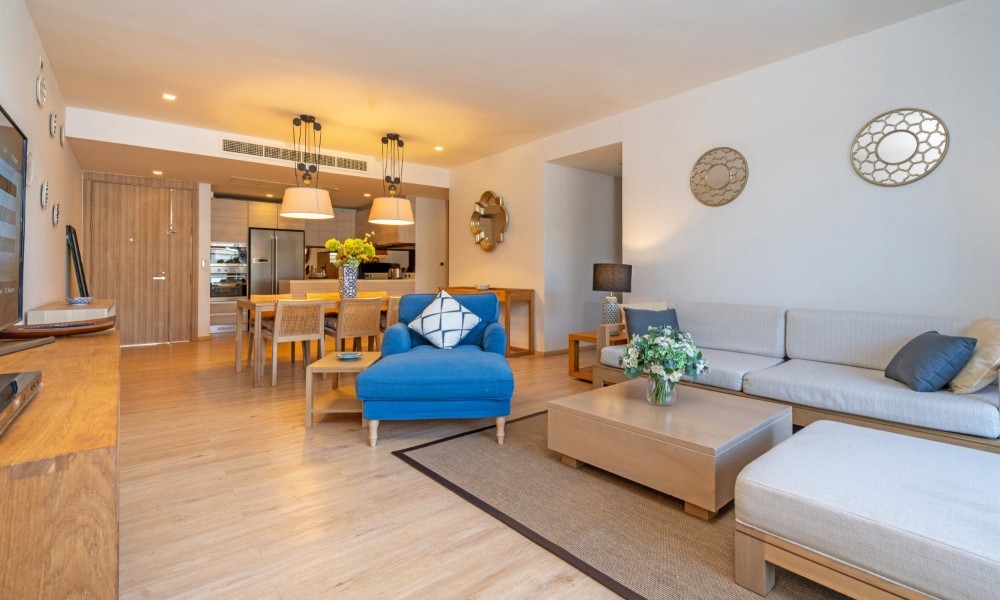
How to plan a budget for your home interiors?
With the festive season around the corner, many builders are handing over flats or soft possession. That opens up the question around interiors, shortlisting the correct interiors partner, budgeting, requirement planning etc. Here are some quick and helpful tips to take you through that process.
Home interiors comprise of 6 major components that add up to your total budget –
Table of Content
- • How to plan a budget for your home interiors?
- • The process of coalescing requirements –
- • The biggest mistakes that people make while engaging a professional is:
- • Important dos and donts –
- • Dos:
- • Don’ts:
- • Woodwork
- • Loose furniture
- • Electrical fittings and labor
- • Paint and wall coverings
- • Curtains, décor
- • Civil work
In new builder driven flats the expenses pie chart may look as below –
Generally, with good specifications of marine ply with branded laminates and Hettich/Hafele type fittings, the complete woodwork with painting would start at around 1000 rs per sq ft of carpet area of flat. With a false ceiling, wallpapers, some home décor, lighting, electrical, it could start at Rs. 2000 per sq ft of carpet area of flat. The range for interiors depends on the material specification and with a hotel like look, it can go upto Rs. 10,000 per sq ft. If you have a heavy look or a hotel like look in mind, reserve Rs. 4000 per sq ft as a good budget.
If you have bought a resale or an existing/old property the scenario might be different owing to demolition, civil works etc. In an old flat, the pie chart may look as below:
A home with a lot of civil work, breaking walls, flooring, new bathrooms etc with wood work, false ceiling could start at Rs. 2500 per sq ft carpet area. With Italian marble and complete new electrical, kitchens, bathrooms, demolition of old, the costs could start at Rs. 4000 per sq ft.
The interiors market is so unorganized that material specifications vary from particle board/mdf/engineered woods to marine ply with a plethora of branded/unbranded/Chinese finishes and fittings that will leave you completely confused on the final cost.
However, it is very important to create a set of specifications for yourself and do an apple to apple comparison for rational benchmarking! Beware of incomplete quotations that do not capture all items and lower specifications.
The Process Of Coalescing Requirements –
So here’s how to plan your budget. A budget is dependent on 3 factors:
- • Quality and interiors lifecycle
- • Timeline for interiors work
- • Aesthetic
Step 1: Make a wishlist of what is definitely required.
Step 2: Decide the outlook for your interiors: are you looking for something with a life of 3-5 yrs that you want to change? Or are you looking for something that will last 15 years? Are you willing to do your interiors in a phase wise manner? The answers to the above questions lead to very different interior solutions and budgets.
If your interior outlook is to change the home in 3 years or so, which is a very western concept, there are the most options in this category. A plethora of particle board, mdf, hdf core furniture, Chinese furniture, readymade furniture and online furniture is easily available. The cost of this option is also extremely affordable.
If you are looking for something long term, then plywood is usually a better bet. In that option, borer proof marine ply tends to last the best for moisture and termite reasons. This might cost double of the above option but on a lifecycle costing basis, it is much cheaper.
If your interiors are financed through a loan or an allocated fund, then the path to your interiors is usually very clear- A budget is to be matched somehow! A simple back calculation of the fund allocation can be matched with the above pie chart with a 10% miscellaneous escalation buffer added in.
However, many of us buy dream homes and don’t do home interiors for at least 10-15 years, at a time! We don’t want to compromise into a budget. Yet home interiors can range from Rs. 1000 per sq ft to Rs. 10,000 per sq ft depending on the finishes one chooses. Many designers might also quote similarly. Dealing with pure numbers is easy but matching an aesthetic to numbers with a final delivery quality is hard.
If you are willing to work phase wise, then the option to do roomwise is not the better one although it might be the common one. The reason is that interior work is divided into noisy and dusty activities and non-noisy activities. The phase wise work should be civil, electrical – phase 1, Fixed furniture and paint- phase 2, loose furniture, curtains, home décor- phase 3.When work is done with an overall design in the above phases, the end result is usually coordinated and aesthetic and also cost effective and well planned. The pain of labor milling in your flat or dealing with the tremendous dust of civil work done room wise is also curtailed!
If aesthetics is a major consideration, a professional must be onboarded! While many of us are gifted with aesthetics and choice making abilities, a professional Interior Designer or architect tends to lend 2 very important domain advantages to you:
- Knowledge of new materials, their application, providing you with trending and unique looks.
- Coordination of the entire aesthetic with quality and cost standards to deliver your home as desired.
The Biggest Mistakes That People Make While Engaging A Professional Is:
Not benchmarking the value and cost of the professional. A customer must shortlist at least 3 agencies and compare the offering and aesthetic apple to apple. Once done, you have to trust the agency to deliver while watching over deliverables and timelines.
After finalizing an agency, trust is very important. one must let them guide you. The interior products and vendors are still unorganized in india. The quality and pricing still remain largely nebulous. Many professionals take care to curate good vendors and might insist on their usage for ease of product delivery. There tends to be suspicion on the motivation of the professional but remember, to trust your shortlisted agency.
The last and most important point is that Interiors is a creative field and you must allow for some creative suggestions that might add to your cost but provide great joy! This is especially true when people are very specific to what they want, leaving the creative professional to execute the instructions leaving the process to be very mechanical for the creative person. This almost never provides the same end result as a creatively engaged professional on your project. So make sure that your professional agency is working for you.
In a nutshell, engaging a professional adds to your budget plan! The more expertise the agency has, the greater the fee might be. However, a professional agency might actually offset the cost of your interiors with time saving achieved in the long run. Obviously, the time saved is money saved!
Important dos and dont’s –
Dos:
- Plan your wishlist before meeting contractors/designers for your home. Clarity will save you time and give you better pricing from your agency. Customers who are very unclear generally receive higher prices to buffer from uncertainty during design and selection.
- Choose the agency you want to engage in for your work in a calm and non-rushed manner. Once you do, entrust them with the work.
- Create your internal decision-making mechanism and payment mechanism before starting the work. Too many decision-makers and payment loops always delay projects.
- Do finalize design first. Insist on a complete set before starting so that there are no misunderstandings and surprises. Changes are a sure shot way to receive cost escalations and time delays.
Also Read: Top 7 Vastu Tips To Improve Your Home’s Entrance
Don’ts:
- Don’t window shop for free design. Free design is a marketing exercise that is generally open-ended and generic.
- Don’t engage many agencies in your flat, that always causes blaming and infighting. Time delays are inevitable.
- Going for quality products always reflects in the end product.
- Don’t second guess or micromanage your designer. Leave some creative decision making for them as they are trained to deliver a project of delight that they add to their portfolio!



